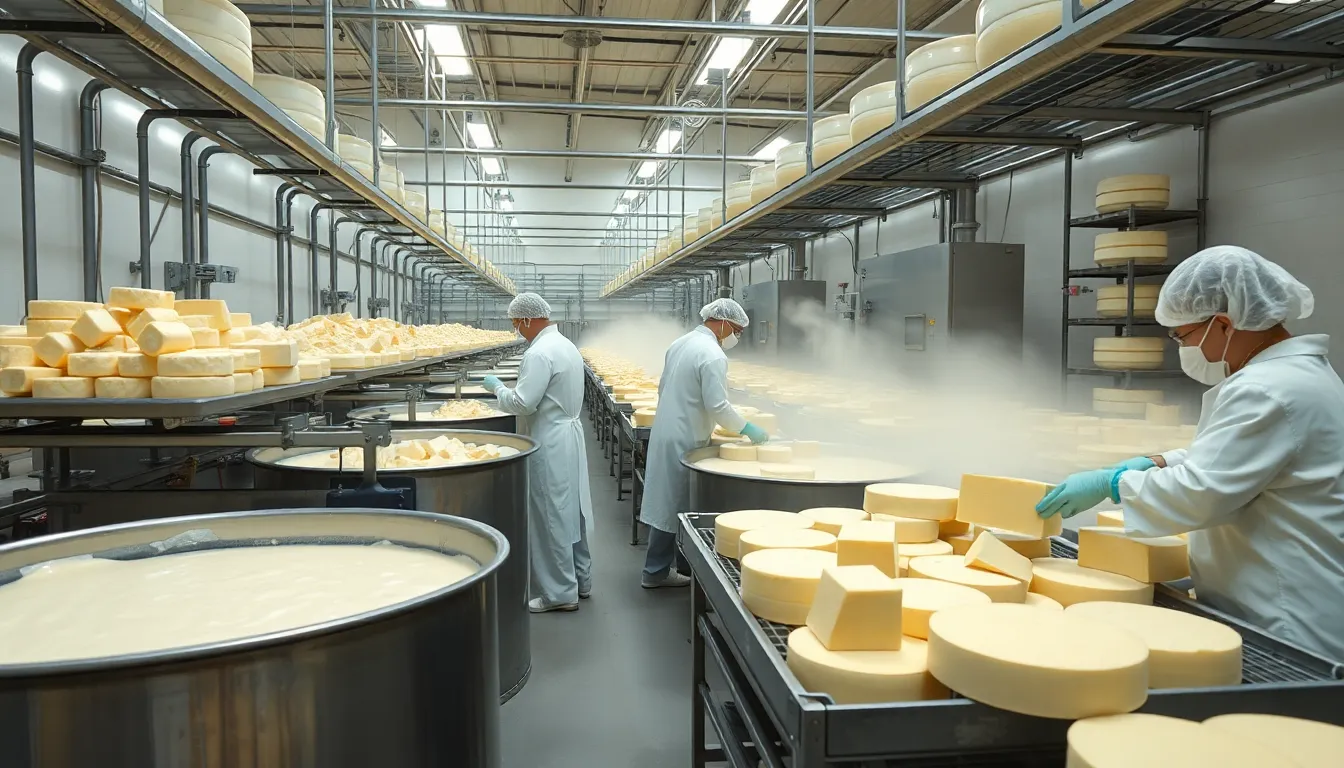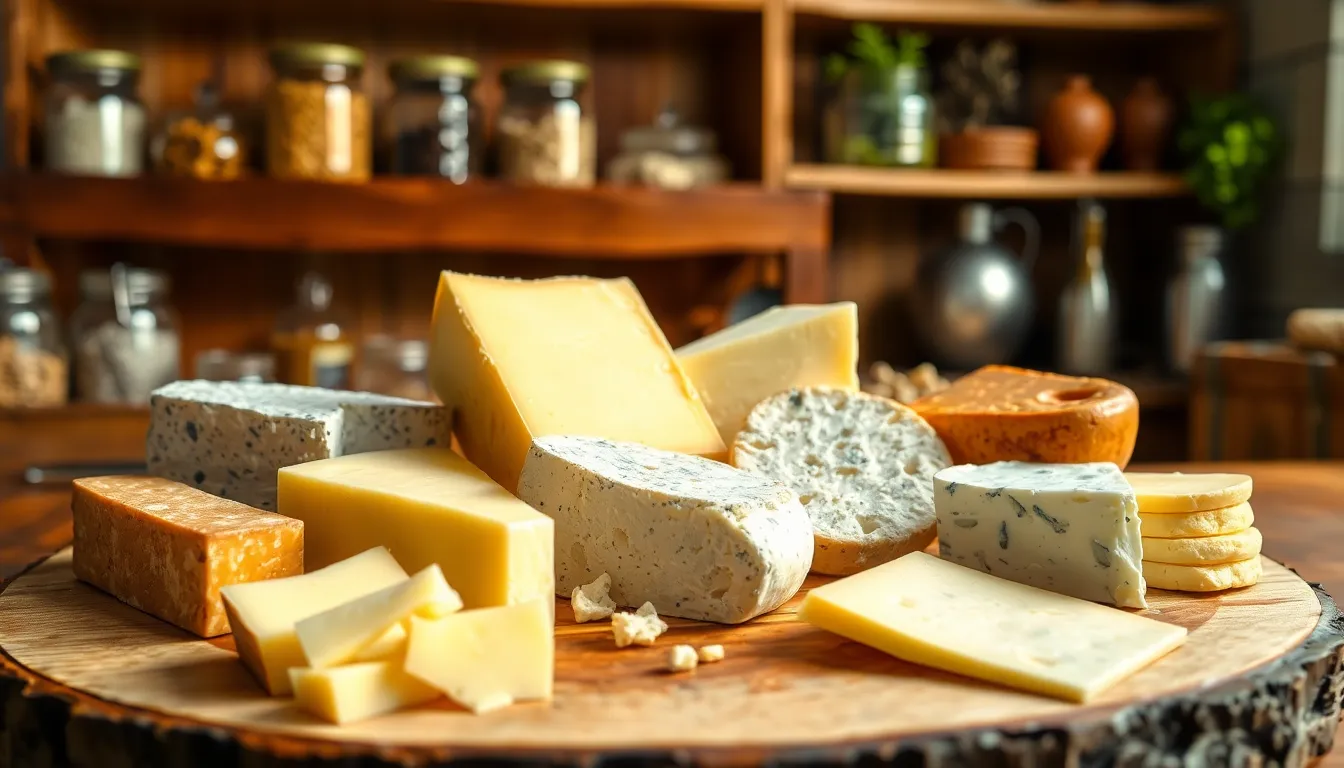Cheese holds a special place in many diets around the world, but the question of whether it’s a processed food sparks lively debate. With countless varieties and production methods, cheese often blurs the lines between natural and processed. Understanding its classification can help consumers make informed choices about their diets.
Some argue that cheese is simply a natural product derived from milk, while others point to the additives and techniques involved in its production as evidence of processing. This article delves into the nuances of cheese production, examining the factors that determine its status as a processed food. By exploring these aspects, readers can gain a clearer perspective on what cheese truly is and how it fits into a balanced diet.
Table of Contents
ToggleUnderstanding Processed Foods
Processed foods encompass items altered from their original form for preservation or enhancement. This alteration involves various methods, affecting both nutritional content and consumer perception.
Definition of Processed Foods
Processed foods refer to any food item modified through physical or chemical means. These modifications can include cooking, canning, freezing, drying, or adding ingredients such as preservatives, sweeteners, or flavor enhancers. While not all processed foods are unhealthy, many may contain added sugars or high levels of sodium, impacting overall nutrition.
Types of Processing
Types of processing fall into several categories, each with distinct characteristics:
- Minimally Processed: Foods prepared for convenience, such as pre-washed salad greens or cut vegetables.
- Processed Culinary Ingredients: Items like oils or sugars used for cooking and flavoring.
- Processed Foods: Products with ingredients added for preservation or flavor, including canned vegetables and cheese spreads.
- Ultra-Processed Foods: Items featuring little to no whole food content, such as sugary snacks and instant meals.
Each type of processing influences the nutritional value and health implications of the food, leading to varied perceptions about their roles in diets.
The Production of Cheese

The production of cheese involves specific methods and steps, ranging from traditional practices to modern industrial processes. These methods significantly impact cheese’s classification as a natural or processed food.
Traditional Cheese-Making Methods
Traditional cheese-making methods utilize natural ingredients and age-old techniques.
- Milk Selection: Dairy farmers select fresh milk from cows, goats, or sheep, ensuring quality.
- Curdling: Coagulation occurs through the addition of rennet or acids, creating curds and whey.
- Cutting: Cheese-makers cut curds into smaller pieces, facilitating whey drainage.
- Cooking and Stirring: Heat application and stirring achieve desired texture and moisture content.
- Draining: Cheese-makers separate curds from whey, often by pressing or ladling.
- Salting: Salt enhances flavor, acts as a preservative, and aids in moisture removal.
- Aging: Aging occurs in controlled conditions, developing flavors and textures over time.
Traditional methods focus on minimal alteration of ingredients, positioning these cheeses closer to natural classifications.
Industrial Cheese Production
Industrial cheese production employs advanced techniques to increase efficiency and consistency.
- Milk Processing: Large-scale collection and pasteurization of milk eliminate harmful bacteria.
- Standardization: Dairy products undergo standardization to ensure uniform fat and protein content.
- Coagulation Agents: Manufacturers may use genetically engineered rennet or acids to speed up curd formation.
- Mechanical Cutting and Cooking: Machines cut curds and apply heat to ensure uniformity.
- Rapid Draining Techniques: High-capacity equipment facilitates quick whey removal.
- Additives: Manufacturers often add preservatives, emulsifiers, and flavors to enhance shelf life and taste.
- Packaging: Automated packaging maintains freshness and extends shelf life for mass distribution.
Industrial methods often incorporate additional ingredients, aligning cheeses produced in this way more closely with processed food classifications.
Is Cheese a Processed Food?
Cheese classification varies based on its production methods and ingredients. Understanding the factors influencing cheese’s processing status provides clarity for consumers regarding their dietary choices.
Factors That Determine Processing
Several factors influence whether cheese qualifies as processed. These include:
- Ingredients Used: Cheese made with natural ingredients often falls under the natural category. In contrast, cheeses containing additives like preservatives or artificial flavors align more with processed classifications.
- Production Methods: Traditional methods emphasize natural practices, while industrial methods may incorporate technology and additives.
- Milk Source: The quality and type of milk affect the classification. Milk from pasture-raised animals typically produces cheeses that maintain more natural properties.
- Aging Process: Cheeses aged using traditional methods may retain more nutrients and flavors compared to those hastily processed for mass production.
The Debate Among Nutritionists
Nutritionists often disagree regarding cheese classification. Some argue that traditional cheeses, made with minimal processing, can contribute positively to a balanced diet. Others caution against consuming industrial cheeses filled with additives and preservatives, which might pose health risks.
- Nutritional Value: Traditional cheeses maintain more beneficial nutrients and probiotics, whereas highly processed cheeses may lack essential elements.
- Health Impacts: Some professionals highlight potential links between ultra-processed cheeses and health issues such as obesity and cardiovascular diseases.
- Consumer Awareness: Many nutritionists advocate for clearer labeling, helping consumers identify the distinctions between natural and processed cheeses.
These discussions reflect the broader conversation about cheese’s role within the spectrum of processed foods, underscoring its complex nature in dietary contexts.
Health Implications of Cheese Consumption
Cheese consumption carries nutritional benefits and potential drawbacks depending on its classification as natural or processed.
Nutritional Benefits
Cheese serves as a rich source of several essential nutrients, including protein, calcium, and vitamins A and B12.
- Protein: Cheese contains high-quality protein, crucial for muscle maintenance and repair.
- Calcium: It offers significant calcium amounts, supporting bone health and reducing the risk of osteoporosis.
- Vitamins: Cheese supplies important vitamins like A, which promotes vision and immune function, and B12, which aids in red blood cell formation.
Certain cheeses, particularly those made from raw milk, may also contain beneficial probiotics that promote gut health. Furthermore, moderate cheese consumption can contribute to satiety, helping with weight management.
Potential Drawbacks
While cheese provides various health benefits, excessive consumption can pose certain risks.
- Saturated Fat: Many cheeses are high in saturated fats, which can elevate cholesterol levels and increase cardiovascular disease risk when consumed in large amounts.
- Sodium: Processed cheeses often contain high sodium levels, contributing to hypertension and increased risk of heart disease.
- Additives: Industrial cheeses may include preservatives and artificial flavors, which can detract from their overall nutritional quality.
Consumers should consider the type of cheese and portion sizes to maximize health benefits and minimize potential health risks.
Cheese occupies a unique position in the food classification spectrum. Its classification as processed or natural largely depends on the production methods and ingredients involved. Traditional cheeses often retain their natural qualities, while industrial varieties may contain additives that align them with processed foods.
Consumers should remain informed about the different types of cheese available. Understanding the distinctions between traditional and industrial cheeses can help in making healthier dietary choices. By considering factors such as ingredients and production methods, individuals can enjoy cheese’s nutritional benefits while being mindful of potential health risks associated with certain processed varieties.






